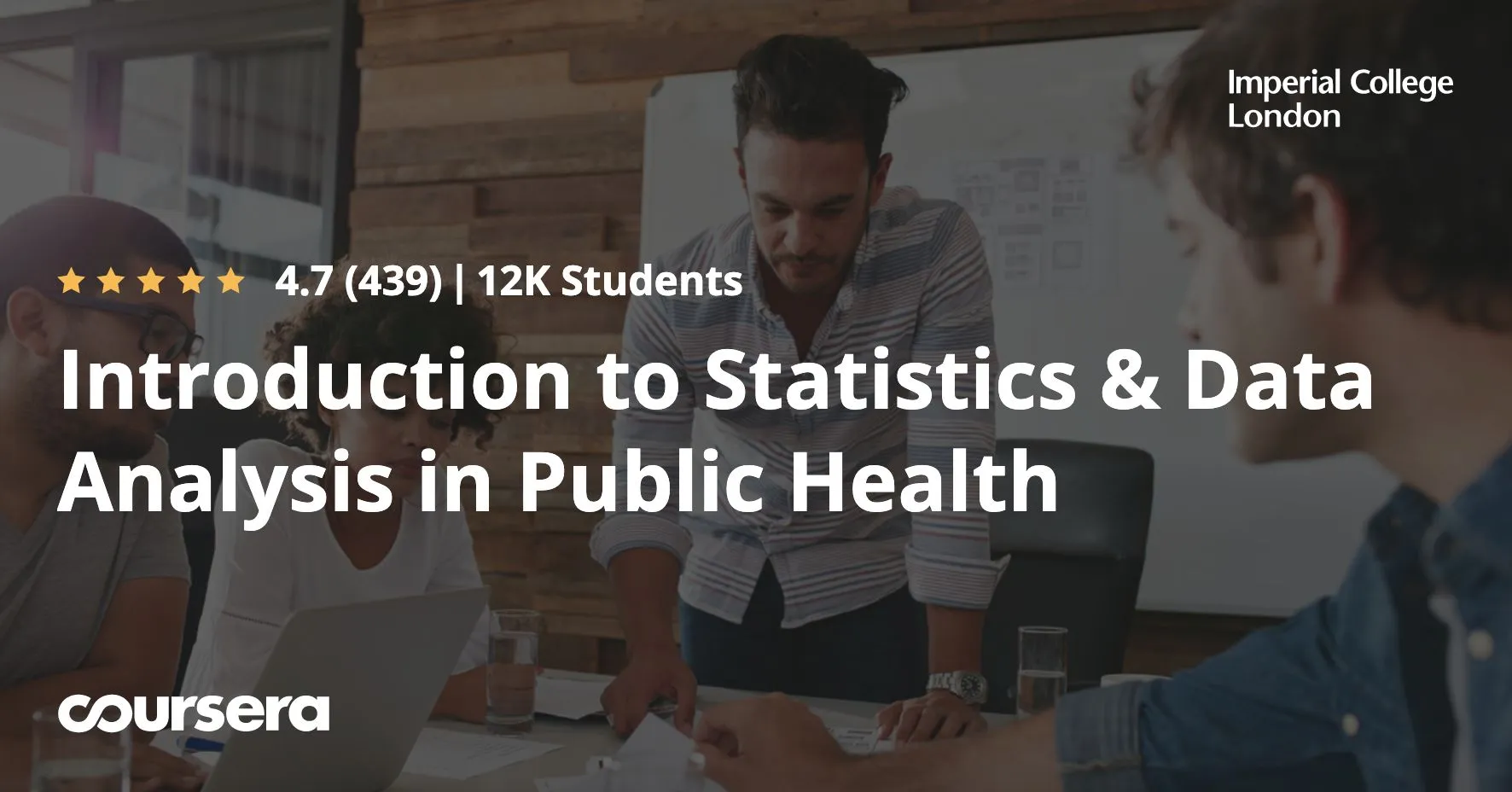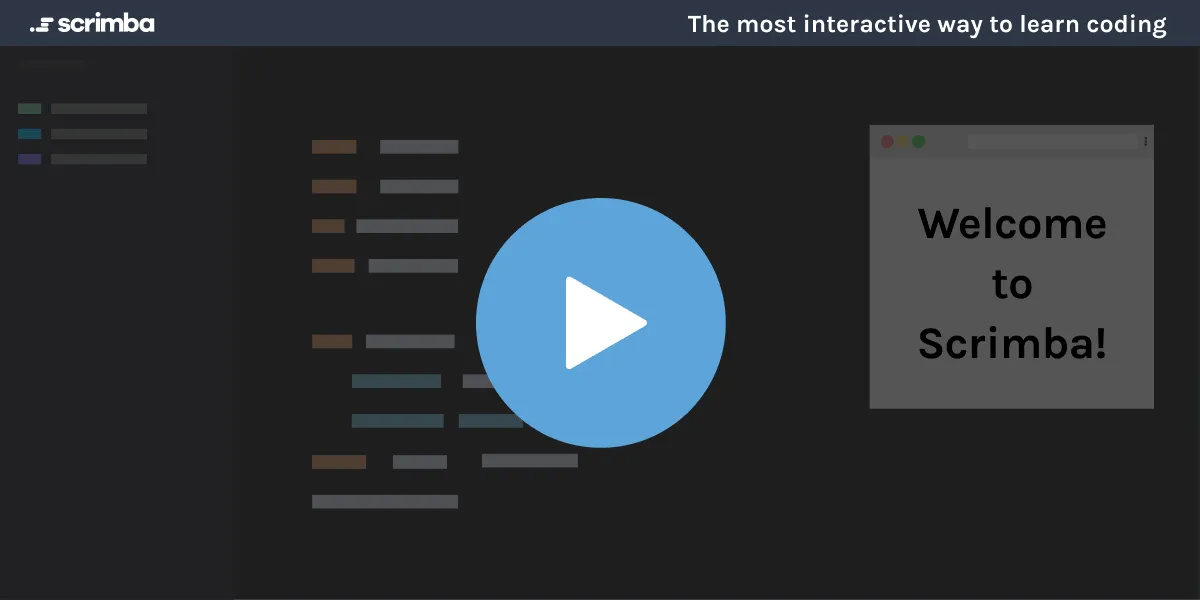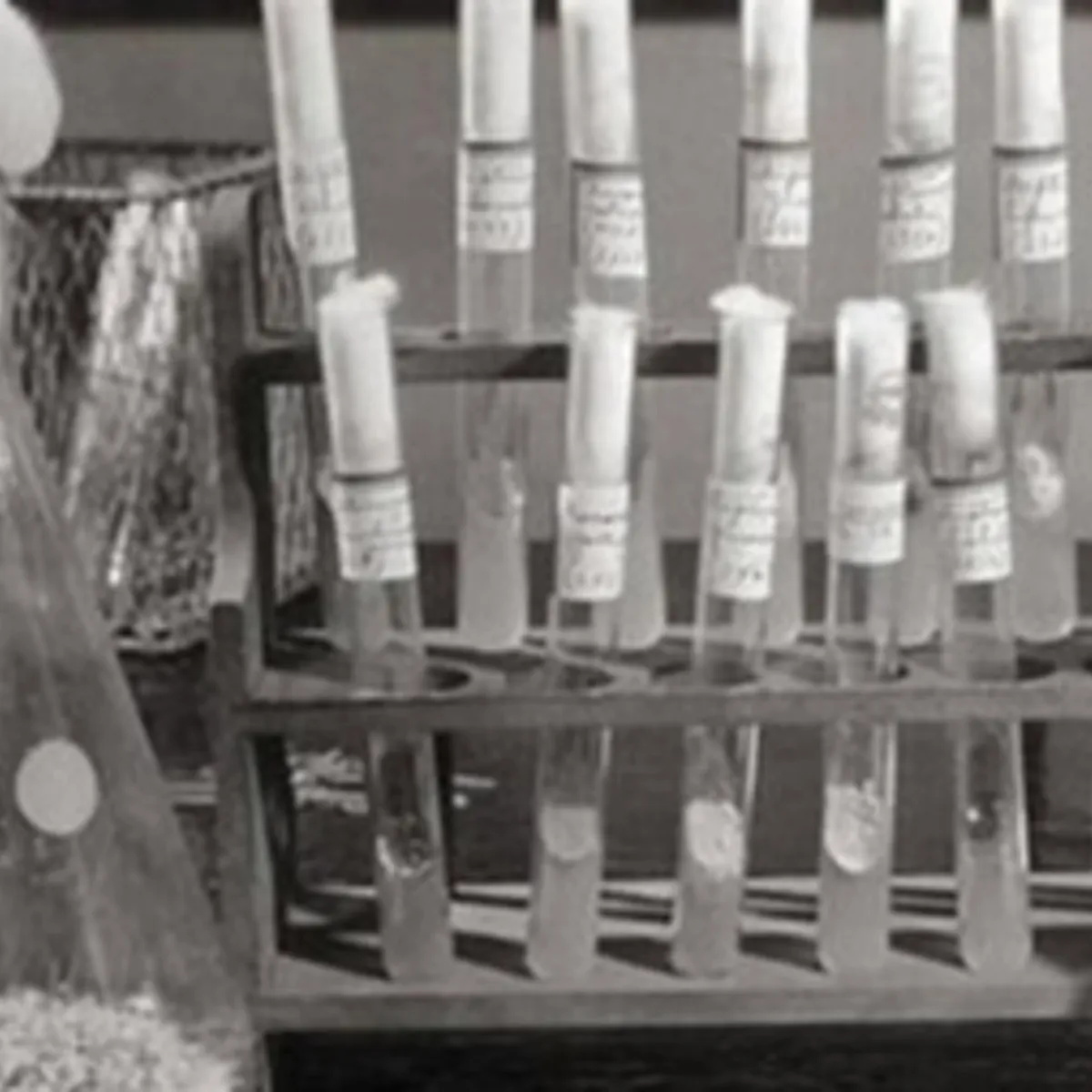
Introduction to Statistics & Data Analysis in Public Health 
This course provides an overview of the fundamentals of statistics and data analysis in public health, including descriptive and inferential statistics, data visualization, and data management. Gain the skills to make informed decisions in public health. ▼
ADVERTISEMENT
Course Feature
![]() Cost:
Cost:
Free
![]() Provider:
Provider:
Coursera
![]() Certificate:
Certificate:
No Information
![]() Language:
Language:
English
![]() Start Date:
Start Date:
Self Paced
Course Overview
❗The content presented here is sourced directly from Coursera platform. For comprehensive course details, including enrollment information, simply click on the 'Go to class' link on our website.
Updated in [March 06th, 2023]
This course provides an introduction to the use of statistics and data analysis in public health. Students will learn to defend the critical role of statistics in modern public health research and practice. Through the use of descriptive statistics and graphical methods in R, students will be able to describe a data set from scratch, including data item features and data quality issues. Additionally, students will be able to choose and apply appropriate methods for formulating and examining statistical associations between variables in a data set. Finally, students will be able to interpret the results of their analysis and evaluate the role of chance and bias.
[Applications]
The application of this course can be seen in the analysis of public health data. After completing this course, students should be able to use descriptive statistics and graphical methods in R to describe a data set from scratch, including data item features and data quality issues. They should also be able to choose and apply appropriate methods for formulating and examining statistical associations between variables in a data set. Furthermore, they should be able to interpret the results of their analysis and evaluate the role of chance and bias.
[Career Paths]
1. Data Scientist: Data Scientists are responsible for collecting, analyzing, and interpreting large amounts of data to identify trends and patterns. They use their findings to develop strategies and solutions to improve public health outcomes. As the demand for data-driven decision-making increases, the need for Data Scientists in public health is expected to grow.
2. Epidemiologist: Epidemiologists use statistical methods to study the distribution and determinants of health-related states or events in specified populations. They use their findings to develop strategies to prevent and control diseases and other health problems. With the increasing prevalence of chronic diseases, the demand for Epidemiologists is expected to grow.
3. Health Policy Analyst: Health Policy Analysts use data and research to inform policy decisions related to public health. They analyze data to identify trends and develop strategies to improve public health outcomes. As the demand for evidence-based policymaking increases, the need for Health Policy Analysts is expected to grow.
4. Public Health Educator: Public Health Educators use data and research to develop and implement educational programs to promote healthy behaviors and improve public health outcomes. They use their findings to create educational materials and programs to raise awareness and encourage healthy behaviors. With the increasing prevalence of chronic diseases, the demand for Public Health Educators is expected to grow.
[Education Paths]
1. Bachelor of Science in Public Health: This degree provides a comprehensive overview of public health, including epidemiology, biostatistics, environmental health, health services administration, and health policy. Students learn to apply data analysis and statistical methods to public health research and practice. Developing trends in this field include the use of big data and machine learning to improve public health outcomes.
2. Master of Science in Biostatistics: This degree focuses on the application of statistical methods to biological and medical research. Students learn to design and analyze experiments, interpret data, and develop models to predict outcomes. Developing trends in this field include the use of artificial intelligence and machine learning to improve the accuracy of predictions.
3. Master of Science in Epidemiology: This degree focuses on the study of the distribution and determinants of health-related states or events in specified populations. Students learn to design and conduct epidemiological studies, analyze data, and interpret results. Developing trends in this field include the use of big data and machine learning to improve the accuracy of predictions.
4. Doctor of Public Health: This degree provides advanced training in public health, including epidemiology, biostatistics, environmental health, health services administration, and health policy. Students learn to apply data analysis and statistical methods to public health research and practice. Developing trends in this field include the use of big data and machine learning to improve public health outcomes.
Course Syllabus
Uses of Statistics in Public Health
Introduction to Sampling
How to Formulate a Research Question
Formulating a research question for the Parkinson's disease and supplement studies
Pros & Cons

Clear explanations of key concepts

Interesting teaching style

Logical and manageable structure

Good for professionals

Builds or rebuilds foundation for statistical concepts

Little lecture material

Lots of reading material

Barely any R syntax worked on Mac

AP level statistics recommended
Course Provider

Provider Coursera's Stats at AZClass
Introduction to Statistics & Data Analysis in Public Health provides an overview of the fundamentals of public health statistics and data analysis including descriptive and inferential statistics, data visualization, and data management. It introduces the fundamentals of statistics and data analysis, and how they are used in public health. Learners will learn about descriptive statistics and graphical methods in R and how to use them to describe datasets from scratch. They will also learn how to select and apply appropriate methods to formulate and examine statistical associations between variables in data sets.
Discussion and Reviews
0.0 (Based on 0 reviews)
Explore Similar Online Courses

Learn React for free

Data Science Fundamentals for Data Analysts

Python for Informatics: Exploring Information

Social Network Analysis

Introduction to Systematic Review and Meta-Analysis

The Analytics Edge

DCO042 - Python For Informatics

Causal Diagrams: Draw Your Assumptions Before Your Conclusions

Whole genome sequencing of bacterial genomes - tools and applications

Healthy and Sustainable Foods

Helping Families Avoid Negative Court Involvement Teach-Out


Start your review of Introduction to Statistics & Data Analysis in Public Health